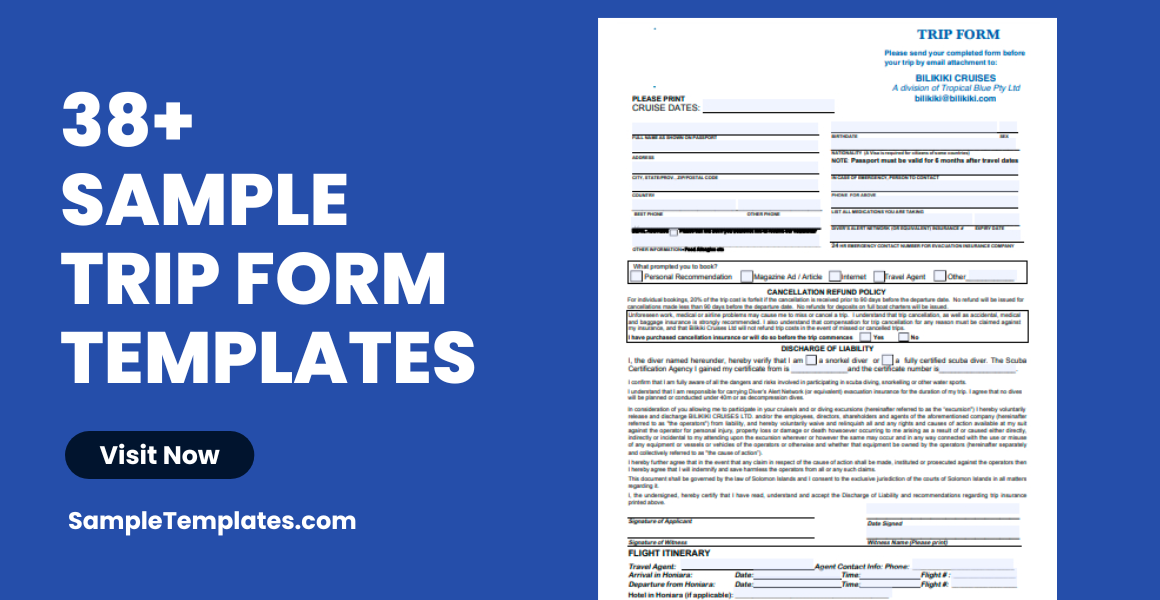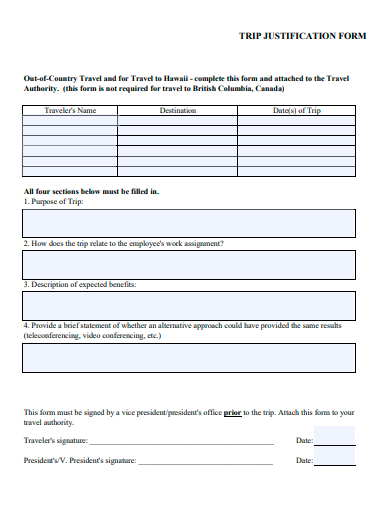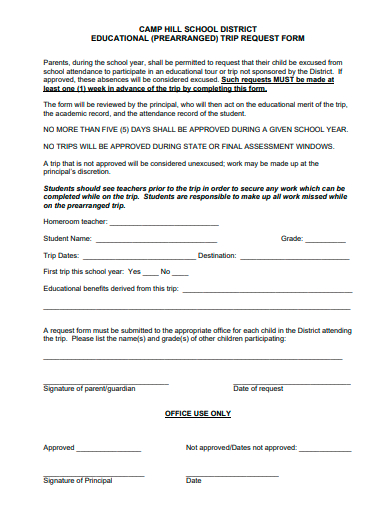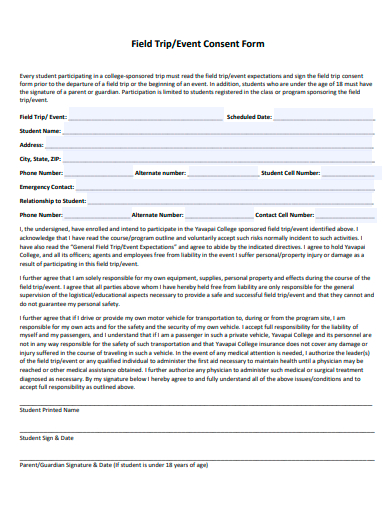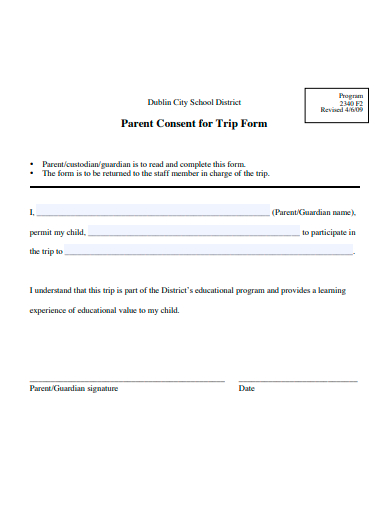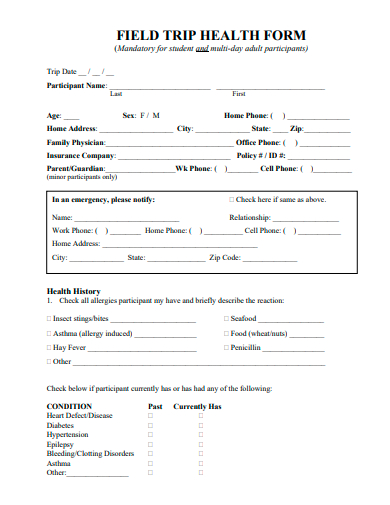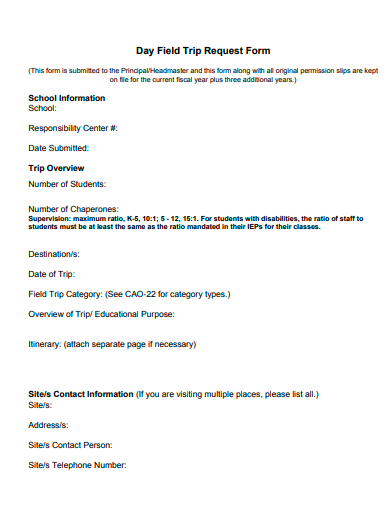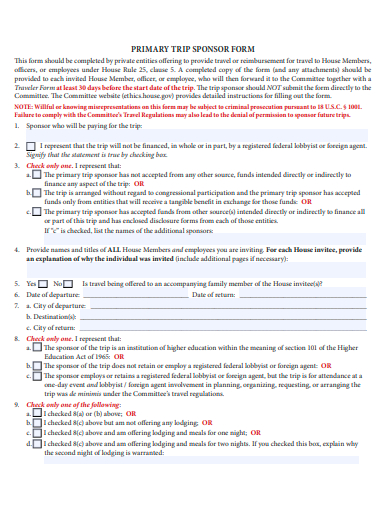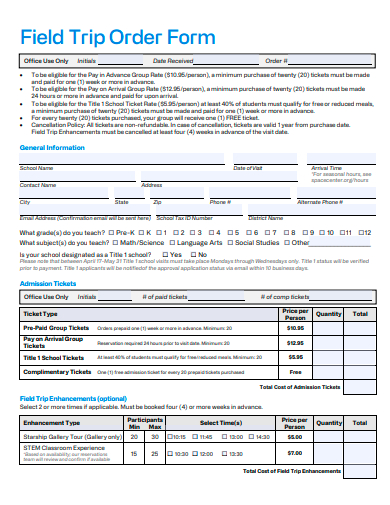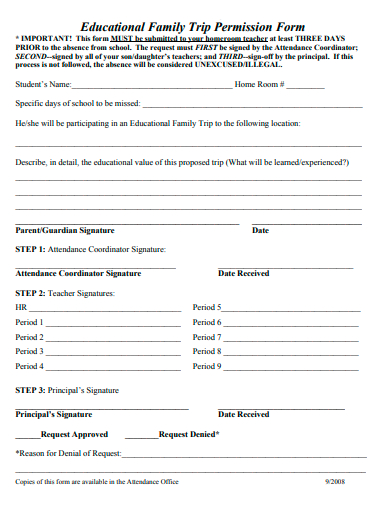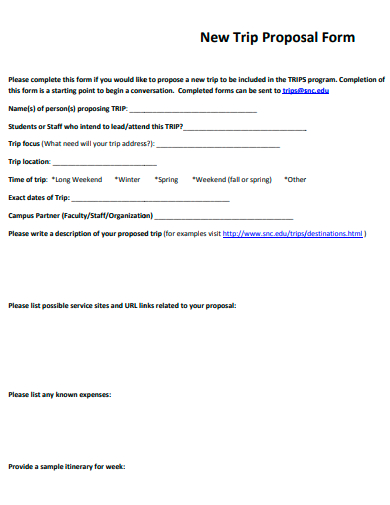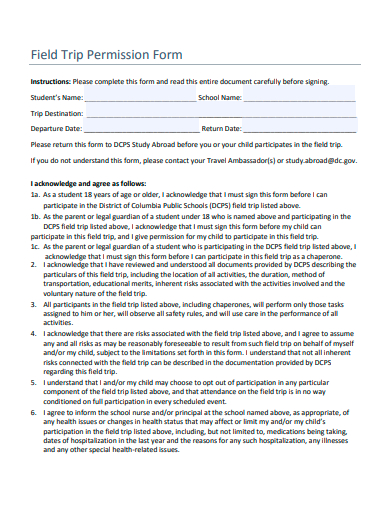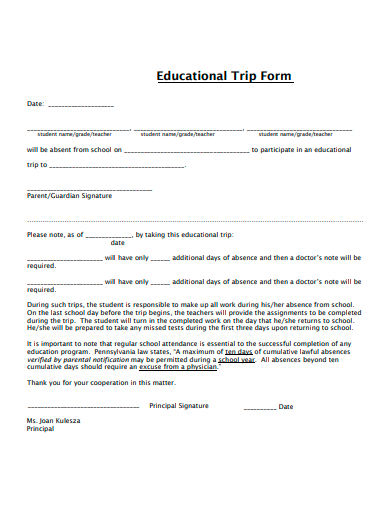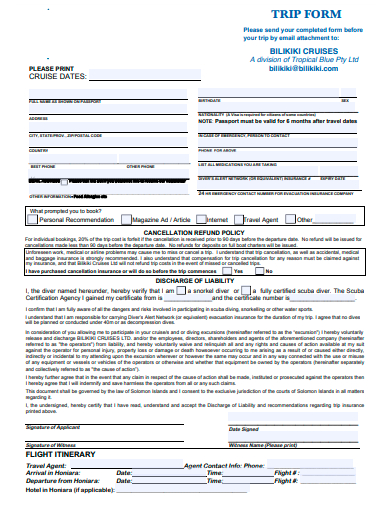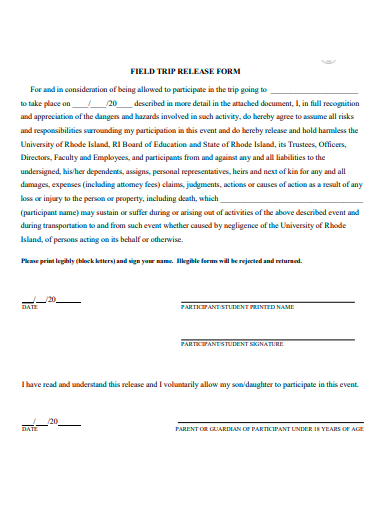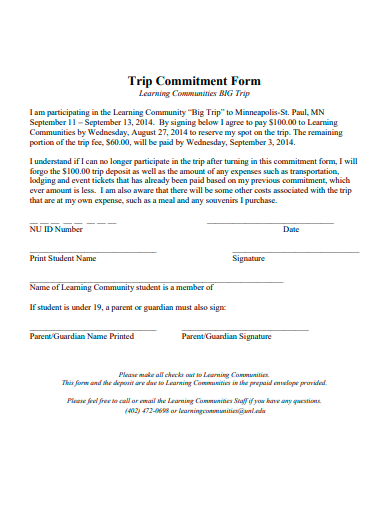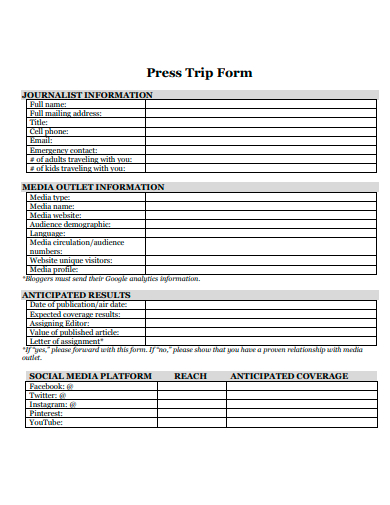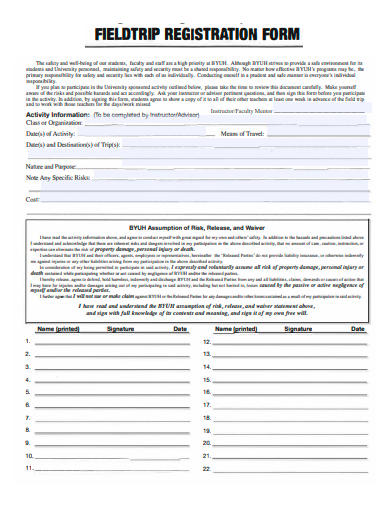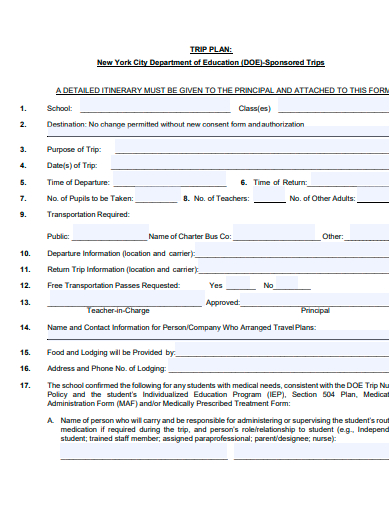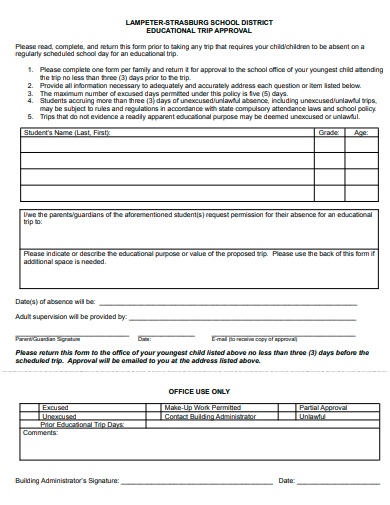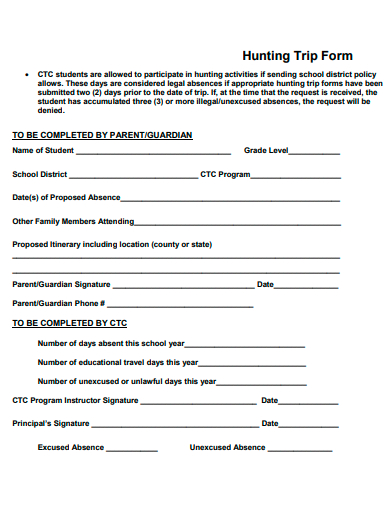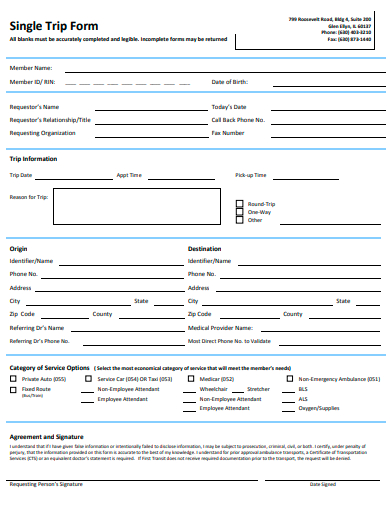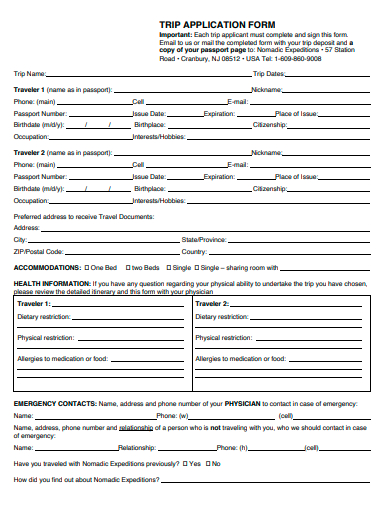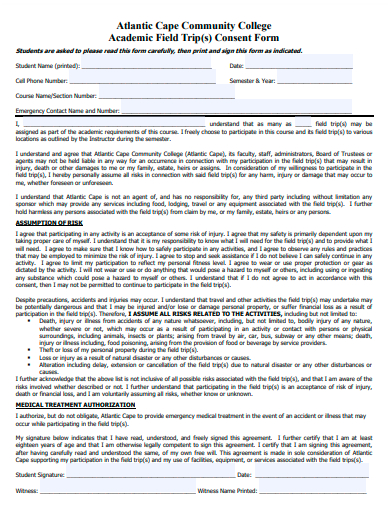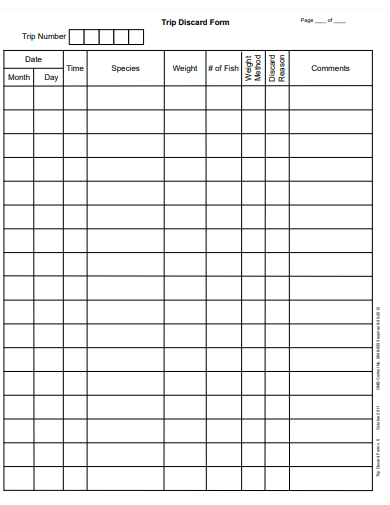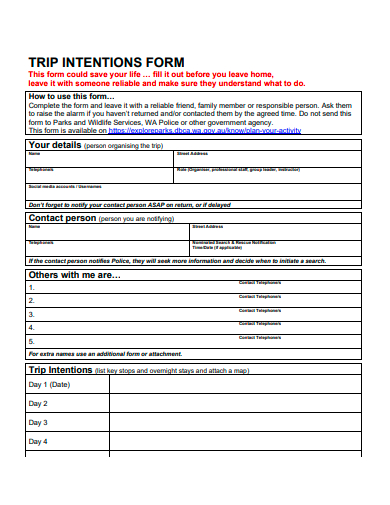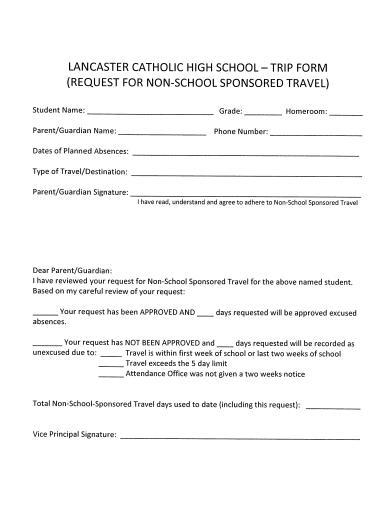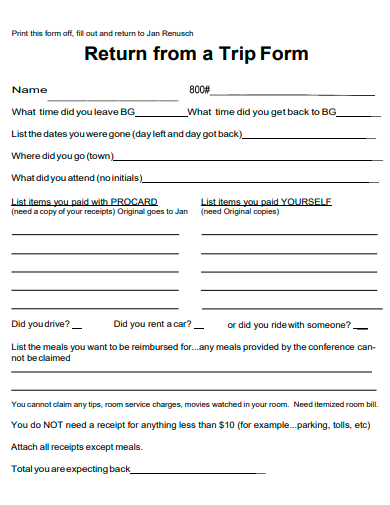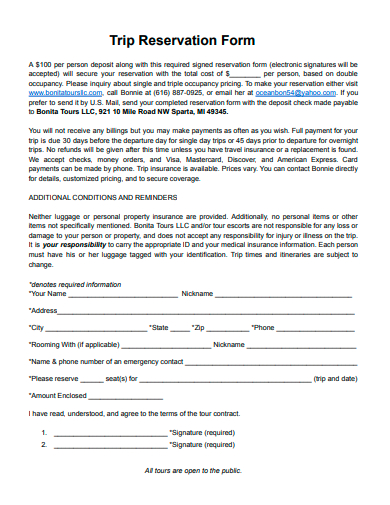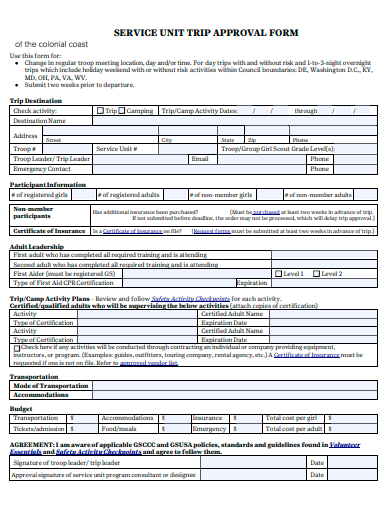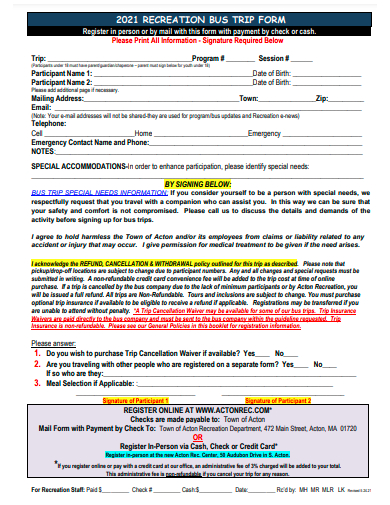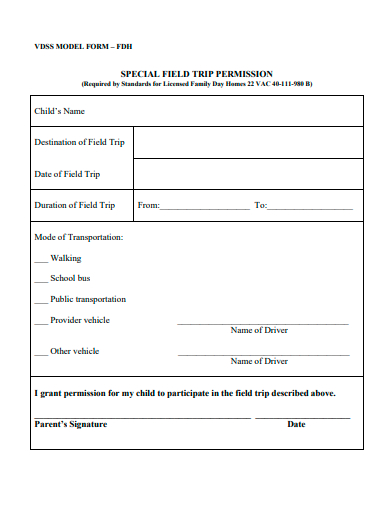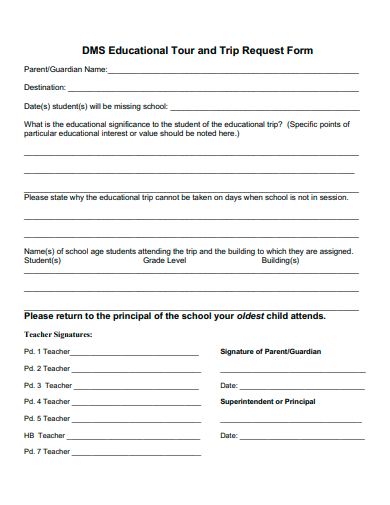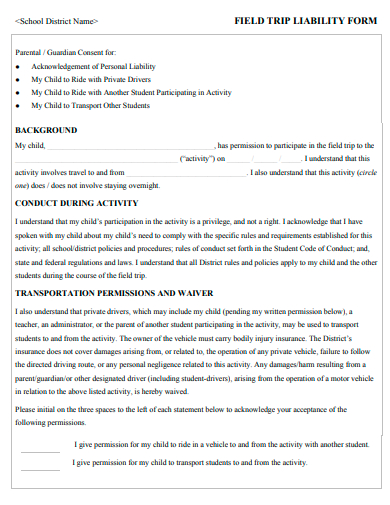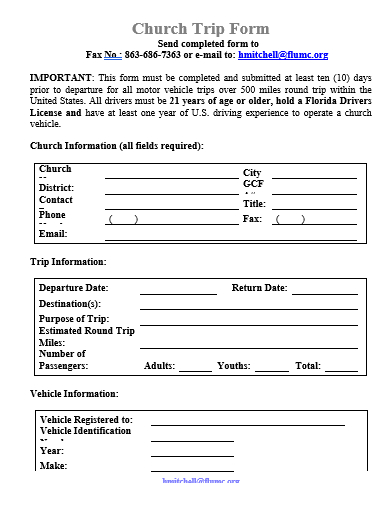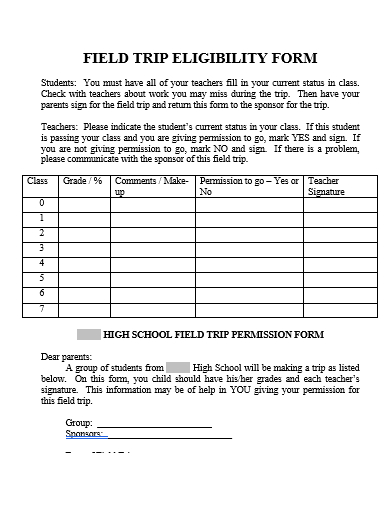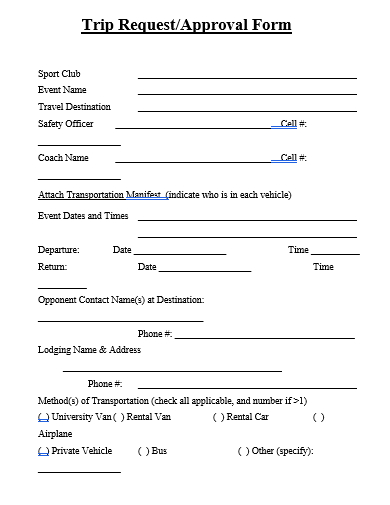Welcome to our comprehensive Sample Trip Form Template – the essential travel form that simplifies your vacation planning! Whether you’re dreaming of a relaxing beach getaway or an action-packed adventure, our user-friendly travel form empowers you to customize every aspect of your trip. From choosing your destination to selecting accommodations, activities, and budget preferences, this travel form is your key to stress-free vacation planning. Say goodbye to travel hassles and unlock the door to your dream vacation with our Sample Trip Form Template. Start creating your perfect getaway now!
38+ Trip Form Samples
1. Trip Justification Form Template
2. Educational Trip Request Form Template
3. Field Trip Event Consent Form Template
4. Parent Consent for Trip Form Template
5. Field Trip Health Form Template
6. Day Field Trip Request Form Template
7. Primary Trip Sponsor Form Template
8. Field Trip Order Form Template
9. Educational Family Trip Permission Form Template
10. New Trip Proposal Form Template
11. Field Trip Permission Form Template
12. Educational Trip Form Template
What is a trip form?
A trip form, also commonly referred to as a travel form, is a document or online tool used to collect essential information and preferences from individuals or groups planning a trip or vacation. This tool serves as a valuable resource for both travelers and travel service providers, helping to streamline the sample planning process and ensure that all aspects of the trip align with the travelers’ desires and requirements.
Here’s an in-depth look at what a trip form entails and its significance in the travel industry:
Personal Information:
A trip form sample typically begins by requesting personal information from the traveler(s). This includes names, contact details, and sometimes passport or identification numbers. This information is crucial for creating reservations, confirming bookings, and ensuring effective communication throughout the trip.
Travel Details:
Travelers are asked to specify their travel dates, including departure and return dates. This information helps in coordinating transportation and accommodation arrangements.
Destination and Itinerary:
Travelers are required to provide details about their desired destination(s) and the overall itinerary of their trip. This may include information about multiple stops, tours, or specific places they wish to visit.
Accommodation Preferences:
The form may inquire about accommodation preferences, such as the type of lodging (e.g., hotel, vacation rental, hostel), desired star rating, and any specific hotel requests.
Transportation Choices:
Travelers can specify their transportation preferences, whether they plan to fly, drive, take a train, or use other means of transportation. It also includes information about airport transfers or car rental requests.
Activities and Excursions:
One of the most critical aspects of a trip form is gathering information about the activities and excursions that interest the travelers. This could encompass everything from guided tours and adventure activities to cultural experiences and dining preferences.
Budget and Payment Information:
To help travelers stay within their budget, the form may request details about their financial constraints and preferred payment methods. This ensures that the trip is tailored to their financial comfort zone.
Special Requests and Dietary Restrictions:
Travelers can use the form to communicate any special requests or dietary restrictions. This is particularly important for travelers with allergies or specific preferences.
Travel Insurance and Health Information:
In some cases, the form may inquire about travel insurance preferences and any pertinent health information, especially if the trip involves physically demanding activities or requires special accommodations.
Emergency Contact Information:
– Collecting emergency contact details is a safety measure to be used in case of unexpected situations or emergencies during the trip.
Significance of a Trip Form:
A well-designed trip form serves several crucial purposes:
Personalization: It allows travel service providers, such as travel agencies, tour operators, and accommodation providers, to tailor their offerings to match the individual preferences and requirements of their clients.
Efficiency: By collecting all essential information in one place, the trip form streamlines the booking and planning process, reducing the likelihood of misunderstandings or mistakes.
Communication: The form serves as a communication bridge between travelers and service providers, ensuring that everyone is on the same page regarding trip details.
Satisfaction: A trip that aligns with travelers’ preferences and expectations is more likely to result in a satisfying and memorable experience.
Record Keeping: It provides a structured record of the trip details, making it easy to refer back to and confirm bookings and arrangements.
In conclusion, a trip form is a vital tool in the travel industry that facilitates efficient, personalized, and enjoyable travel experiences for individuals or groups. Whether you’re planning a leisurely vacation or a business trip, the information collected through a trip form helps ensure that your journey is tailored to your specific needs and desires. It’s a powerful resource that enhances the overall travel planning and booking process, making it an essential component of modern travel.
13. Sample Trip Form Template
14. Field Trip Release Form Template
15. Trip Commitment Form Template
16. Press Trip Form Template
17. Field Trip Registration Form Template
18. Trip Plan Form Template
19. Educational Trip Approval Form Template
20. Trip Informed Consent Form Template
21. Hunting Trip Form Template
How to make a trip form?
Creating a trip form is a practical and efficient way to gather essential information from travelers, ensuring a smooth and personalized trip planning process. Below are the steps to make a trip form:
Define Your Purpose:
Start by determining the purpose statement of your trip form. Are you a travel agency looking to assist clients with vacation planning? Or are you a group organizer preparing for a group trip? Knowing your purpose will guide the content and structure of your form.
Choose a Format:
Decide whether your trip form will be a physical document or an online form. Online forms, created using tools like Google Forms or survey platforms, are often more convenient for both the creator and respondents.
Identify Key Information:
Determine the information you need to collect. This typically includes personal details (names, contact information), travel dates, destination preferences, accommodation choices, transportation preferences, and activities/excursions of interest.
Create Sections and Questions:
Organize your trip form into sections to make it user-friendly. For example, you can have sections like “Personal Information,” “Travel Details,” “Accommodation Preferences,” and so on. Under each section, formulate clear and concise questions to gather the necessary information.
Include Clear Instructions:
Provide clear and concise instructions at the beginning of the form to guide respondents on how to fill it out effectively. Explain the purpose of the form and emphasize the importance of providing accurate information.
Add Dropdowns and Checkboxes:
Use dropdown menus and checkboxes whenever possible to simplify the selection process for respondents. For instance, offer a list of popular destinations or accommodation options to choose from.
Allow for Customization:
While providing predefined options is helpful, allow respondents to provide additional information or requests in open-text fields. This accommodates unique preferences and special requests.
Consider Budget and Payment Preferences:
If applicable, include questions related to budget constraints and preferred payment methods. This information helps tailor the trip to the traveler’s financial comfort.
Plan for Accessibility:
Ensure that your trip form is accessible to all users, including those with disabilities. Use a readable font and provide alternative text for images if you’re creating an online form.
Test the Form:
– Before launching the trip form, test it yourself to check for any errors or issues. Make sure the form functions correctly, and responses are being collected as intended.
Share the Form:
– If you’re creating an online form, share it through various channels, such as email, social media, or your website. If it’s a physical form, distribute it to travelers or make it available for download on your website.
Set a Deadline:
– Specify a deadline for respondents to complete the form to ensure you have sufficient time to make necessary arrangements.
Collect and Organize Responses:
– As responses come in, collect and organize the data. Use spreadsheets or database tools to keep track of each traveler’s preferences and requirements.
Follow Up:
– After analyzing the responses, follow up with travelers to confirm details, make bookings, and address any questions or concerns.
Keep Records:
– Maintain records of the trip forms and responses for sample reference and future improvements.
Creating a trip form is a valuable step in delivering a personalized and enjoyable travel experience. It streamlines the planning process, minimizes misunderstandings, and ensures that the trip aligns with the preferences and requirements of the travelers. By following these steps, you can create an effective trip form that enhances the overall travel planning and booking experience.
22. Single Trip Form Template
23. Trip Application Form Template
24. Academic Field Trip Consent Form Template
25. Field Trip Request Form Template
26. Trip Discard Form Template
27. Trip Intentions Form Template
28. Basic Trip Form Template
29. Return Trip Form Template
30. Trip Reservation Form Template
31. Service Unit Trip Approval Form Template
32. Recreation Bus Trip Form Template
33. Special Field Trip Permission Form Template
34. Trip Generation Data Form Template
35. Educational Tour and Trip Request Form Template
36. Field Trip Liability Form Template
37. Church Trip Form Template
38. Field Trip Eligibility Form Template
39. Trip Request Approval Form Template
Who needs a trip form?
A trip form can be a valuable tool for a wide range of individuals, groups, and organizations involved in travel planning and coordination. Here’s a breakdown of who may benefit from using a trip form:
Travel Agencies and Tour Operators:
Travel agencies and tour operators frequently use trip forms to gather essential information from clients. These forms help agents understand clients’ preferences, budget constraints, and travel requirements, enabling them to create personalized travel itineraries.
Group Organizers:
Organizers of group trips, such as school excursions, corporate retreats, or family reunions, often use trip forms to collect details from participants. This information includes travel dates, accommodation preferences, dietary restrictions, and emergency contact information, making group coordination smoother.
Independent Travelers:
Individual travelers who plan their trips independently can also benefit from using trip forms. By organizing their preferences, itinerary, and budget in a structured manner, they can streamline their planning process and ensure that they don’t miss any crucial details.
Event Planners:
Event planners organizing destination weddings, conferences, or other special events in remote locations may require attendees to fill out trip forms. This ensures that transportation and accommodation arrangements align with the event schedule.
Travel Concierge Services:
Luxury travel concierge services use trip forms to gather detailed information about their clients’ preferences, from the type of champagne they prefer in their hotel room to the activities they want to experience during their trip.
Educational Institutions:
Schools and universities organizing educational trips for students often use trip forms to collect consent forms, medical information, and contact details of both students and their parents or guardians.
Nonprofit Organizations:
Nonprofit organizations that organize volunteer trips, mission trips, or humanitarian missions use trip forms to collect information from volunteers, including their skills, medical history, and emergency contact information.
Travel Insurance Providers:
Travel insurance companies may use trip forms to gather information from policyholders about their travel plans. This helps in assessing the level of coverage required for their trip.
Business Travel Coordinators:
Companies and organizations that arrange business trips for their employees use trip forms to gather essential travel details. This includes flight preferences, hotel accommodations, and any specific requirements or restrictions.
Travel Review and Feedback:
– After a trip, travelers may be asked to fill out a trip feedback form. This helps travel service providers, such as hotels or tour companies, collect reviews and suggestions for improvement.
In summary, a trip form is a versatile tool used by a diverse range of individuals and organizations involved in travel planning and coordination. It serves as a means to gather essential information, streamline the planning process, and ensure that travel arrangements align with the preferences and requirements of the travelers. Whether you’re a travel agent, group organizer, event planner, or an individual traveler, using a trip form can enhance the overall travel experience by making it more organized, personalized, and efficient.
Related Posts
Sample Sworn Affidavit Forms
Vehicle Inspection Forms Samples & Templates
Sample Employee Advance Forms
Sample Child Travel Consent Forms
Sample Testimonial Request Forms
Sample Employee Details Forms
Sample Divorce Forms
Sample Attestation Forms
Employee Performance Appraisal Form Templates
FREE 9+ Sample Presentation Evaluation Forms in MS Word
FREE 10+ School Admission Form Samples & Templates in MS Word | PDF
FREE 30+ Patient Consent Form Samples in PDF | MS Word
FREE 10+ Sample Sign Off Form Templates in PDF | MS Word
FREE 11+ Sample Medical Consultation Forms in PDF | MS Word
FREE 8+ Sample Donation Forms in PDF | MS Word
